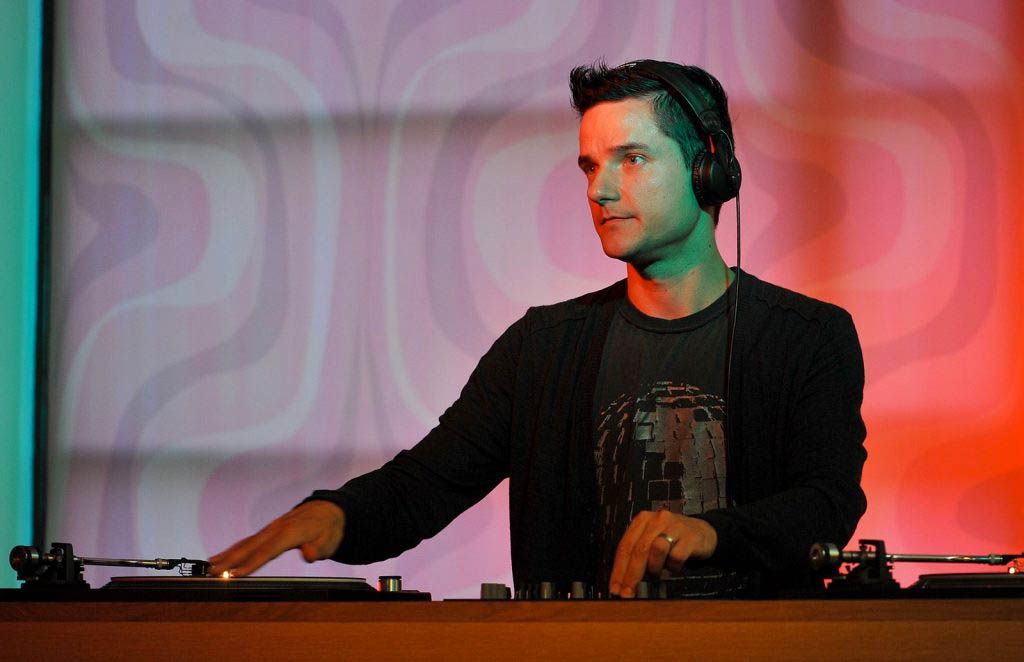A good DJ set is like a story with ups and downs and twists and turns. Here are a few tips to help you create an engaging set and nail it.
So, you’ve got the basics of DJing down and are looking to record a set. You want to do this to promote yourself and get gigs, or you’re about to play your first show. There are no absolute rights or wrongs with DJ sets. They will differ depending on what genre or kind of event you are playing. A good DJ set is like a story. It has ups and downs and twists and turns, all while taking the listener on a journey. Here are a few tips to help you create an engaging set and nail it.
Starting with a Clear Concept
You might be playing a club set within a certain genre. Maybe you’re doing a set for a wedding, birthday, or awards night. Either way, think about who will be listening to the set. What kind of vibe will the gig have?
This will help you to narrow your track choices to a selection that creates the right atmosphere. Part of creating this vision is knowing your audience. If you’re playing at a club, think about your time slot. Where will the audience be in their journey at that time of night?
Generally, people aren’t ready to go to full energy as soon as they walk into the club. Also, think about who you’re playing before and after. What is their style? How can you provide a complement to the headliner?

DJ Tiesto, Photo by Vyacheslav Argenberg
Plan Your Opening
It’s good to have your first five tracks set out. This helps to set up the vibe that you’re looking to set with the listeners. At a live event, you may change from your original plans based on crowd reactions. You might also get into the flow and deviate in the moment. Regardless, it’s good to establish the vision for your set right at the start.
“It’s good to have your first five tracks set out. Establish the vision for your set right at the start.”
Be Prepared
Set up your crates or playlists for the set. You want to be able to access what you need in the moment, without having to scroll through your entire library. Try creating sub crates with particular sub-genres or changes.
It’s often a good idea to include a few throwback tracks in your mix. These give your set a more personal touch, as well as giving your crowd that “nostalgic high.” Or, have a few tracks that are half or double your main BPM. Always group these into sub crates for quick access and make sure they don’t clutter up your core playlist.
Before you perform, listen to every track in your crate. Get to know the breakpoints. These are moments with a transition, breakdown, or shift in direction. Get to know the intros and outros for each song and set up some hot cues to give you quick access to these during your DJ set.

Phrasing
Phrasing is a term used to describe the act of lining up two phrases in a mix. Most western music uses 16 or 32 beat phrases. These are key to a smooth transition, where one track finishes its phrase as the new one starts. It’s a common mistake to have BPMs matched but drop the new track too early or too late. This can create a lull in the mix where nothing is happening. Or, if the new track drops too early it will be messy and you might have overlapping vocals.
Structure
Listen to your tracks in advance. Then, you’ll know the structure and phrasing for each song and be able to line them up. Software such as Serato DJ is perfect for this, as you can see the waveform laid out. The darker parts will show where there is less going on. The different colors will display the pitches of each part of the track.
PRO TIP: Ever been halfway through a mix and find your phrasing is out? Use the beat jump feature on Serato and Roland DJ controllers. This will allow you to jump back or forward by a pre-determined number of beats while staying in time.
Energy
It’s important to recognize the energy of your tracks. Energy relates to, but is not the same, as BPM and key. A hard rock song and a smooth R&B song might be the same BPM and the same key, but they will have very different energy levels.
Consider the energy of each track. Use it to your advantage to guide the crowd’s highs and lows. If you mix from a high-energy track into a more chill one, you’re changing the vibe. This can alienate your audience. Your song selection builds on the concept and vibe that we discussed at the start of the article. The song order creates the energy you’re looking to produce.
“Your song selection builds on a concept and vibe. The song order creates the energy you’re looking to produce.”
Using the energy levels of your track selection can shape your mix. This is a major factor in keeping the listener engaged. To that end, it’s important to think about when planning your set. Not all shapes work for all times. A few common shapes are below.

The Ramp
This is where the DJ slowly increases the energy throughout your set. You can do this by with energy levels in songs and by increasing BPMs. This is great if you are playing before a headliner and want to build to the peak of the night. But it might not work so well at four in the morning.
The Wave
Here, the DJ creates peaks and troughs to give the crowd ups and downs throughout the mix. This keeps your audience interested and is a great technique for making mixtapes. By allowing the energy to drop, you have space to bring in a higher energy track. You can snap the listeners’ attention back to the mix without ever getting too extreme.
“Using the energy levels of your track selection can shape your mix. This is a major factor in keeping the listener engaged.”
The Story
Many books and movies follow a pattern. They build up with smaller climaxes throughout the narrative. Finally, they crescendo before winding back down to wrap up. This is a journey we’re used to experiencing and it can also work great in a DJ mix.
By the same token, if you’re playing house or techno, lots of toms or a bassline-driven rhythm can shift the energy. This draws listeners’ attention back to the beat, as well as the rhythm.
PRO TIP: You can also change energy by changing rhythms. If you are playing a breakbeat set, throwing in a four on the floor track can increase the energy. As there are twice as many accented kicks, it sounds more intense while staying at the same BPM.

DJ Orkidea, Photo by Teemu Rajala
Mixing Keys
Matching BPMs and phrasing are the first steps in a good DJ mix. However, to take it to the next level, consider the keys your songs are in. Like musicians playing in conflicting keys, blending two ill-matched tracks can sound jarring.
When you analyze your tracks in Serato DJ, it will detect the key of your song and save it to your library. This means that you can sort your crate by key, keeping tracks of the same or similar keys in order. You can display the key traditionally or using the Camelot system.
Camelot System
Designed for DJs, the Camelot system makes it easy to see which keys will work together. Different keys show as numbers 1-12 and A or B for minor or major. When using the Camelot system, transitioning within the same number from A to B will work well. This creates a smooth mix.
PRO TIP: The Roland DJ-808 and DJ-505 come with Serato Pitch ‘n Time software. This can shift the tempo of your tracks while remaining in the same key, or even shift the key of your tracks. This enables you to synchronize the key of two songs in different keys. Users can sync either to the same key or a complementary key.

Read the Crowd
Many DJs wonder how much of their set should be pre-programmed and how much should be a live selection. Finding a happy medium between these two is key to a successful set. You can have what you think is the most amazing set planned out and find that it doesn’t work on the night. Or, if you go in entirely unprepared, you may miss good mix opportunities that will take the set to the next level.
Preparation and Spontaneity
The best way to manage the balance between preparation and spontaneity is to watch the crowd. Look for tracks that get the dancefloor pumping. Stay on top of tracks where you can see people start to fade. Part of being a DJ is understanding what people want and what frame of mind they are in.
By placing yourself mentally on the dancefloor, you’ll get a sense of what’s going to work well. Remember, you don’t have to follow the original plan. But, having a plan avoids stage fright and helps you get back to the core theme if you feel you’re drifting off track.

Don’t be afraid to use something that’s working. If the crowd is enjoying a particular break, loop it. Then repeat it an extra time before letting the next part of the song drop. If you see that the crowd is tiring, play something with a little lower energy. Or, slow the mix down to give them a break before bringing it back up again. People can love big drops, but if you keep the energy at 110%, you will lose impact.
“People love big drops, but if you keep the energy at 110%, you will lose impact.”
PRO TIP: Plan mini-combinations. These work great for 1 – 2 style drops. Plus, they give you a chance to back up a great moment with another great moment. Plan out 3 or 4 songs that work well together and keep them in groups. This is a great way of combining the planning of good combinations and still keeping it feeling live. Indeed, it’s like a chess player that thinks a few moves ahead.

Transition Tracks
Working on a DJ set that features a bunch of different genres? Maybe you’ve read the crowd and decided you need to change direction. Consider bringing in transition tracks. These songs are a great way to bridge different energy levels, tempos, or rhythms.
Identify songs that have a good feel and not too many recognizable melodies. Keep them up your sleeve for transitions. Likely, you won’t play these tracks in their entirety. They are there to bridge to your next big hit. However, they can be very useful to give the listener some mental space to make the transition.
“Consider bringing in transition tracks. These songs are a great way to bridge different energy levels, tempos, or rhythms. “
PRO TIP: The TR sequencer on the Roland DJ controllers is a useful tool for transitions. Having a drumbeat without a melody allows you to the tempo up or down without making a song sound off. It can also be a great way to change from four on the floor to breakbeat patterns.
In summary, the best DJs sets use a combination of planning and freestyling to create an amazing experience. Knowing what you’re trying to achieve is the key in deciding what to play, when to play it, and how to mix it all.

David Whitehead
David is Music Marketing Leader for Roland Australia. Through his experience as a radio programmer and DJ, he brings quick thinking and instinctive market knowledge to build strong connections.



